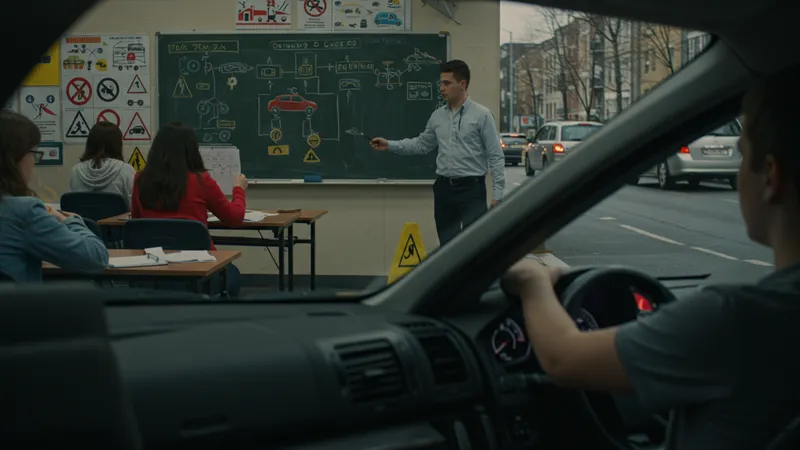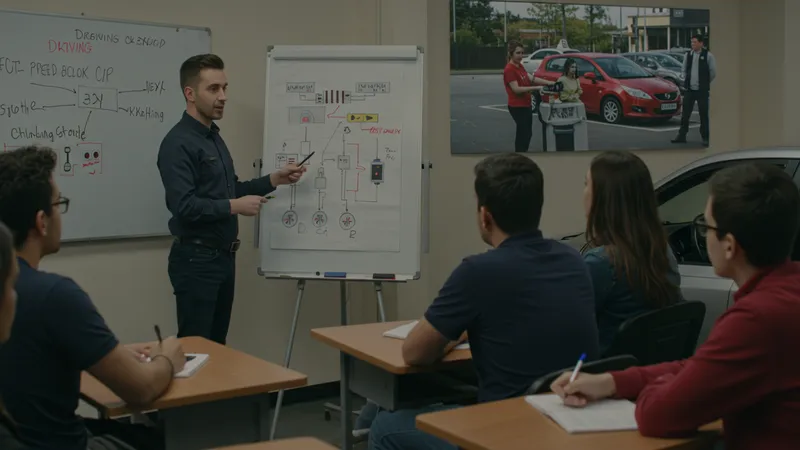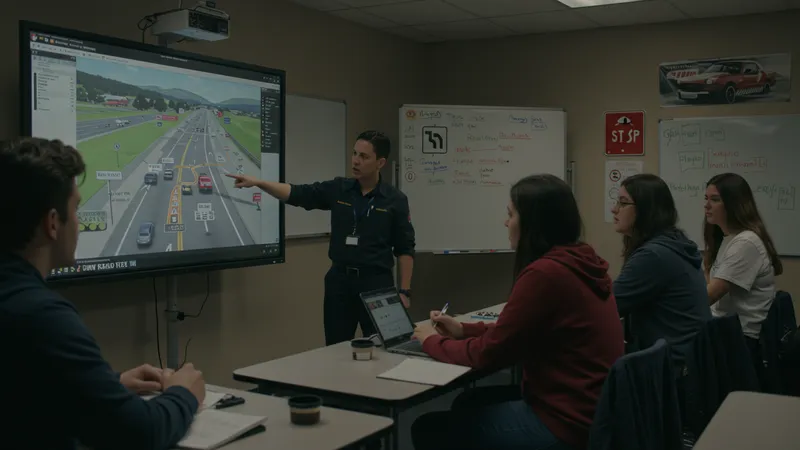

The concept of what to expect during your driving school session is straightforward but crucial: it refers to the key stages, experiences, and milestones every new driver encounters when enrolling in a professional driving school in the United States. This usually involves a blend of classroom instruction, simulation, and practical driving with a certified instructor. Each step is carefully designed to build not just technical skill, but also confidence and safe driving habits.
American driving schools structure their sessions to prepare students for state-specific rules, road conditions, and the DMV (Department of Motor Vehicles) driving test. From learning the theory of traffic laws to hands-on steering, parking, and hazard awareness, each session builds incrementally for new drivers, whether they’re teens or adults. Knowing what’s ahead helps reduce anxiety and ensures better learning outcomes.
Most reputable driving schools across the United States emphasize a combination of theory and practical training. For example, ACES Driving School requires completion of coursework before advancing to real vehicle sessions. This structured approach ensures students fully grasp traffic rules and case studies before facing real-world scenarios, which is particularly valuable for those anxious about operating a vehicle in busy environments.
Online options such as DriversEd.com increasingly appeal to learners who need scheduling flexibility or want to pace their progress. These platforms provide interactive quizzes, video lessons, and progress tracking. In-person sessions then reinforce skills under an instructor’s direct feedback. This hybrid approach is especially popular in larger US cities where access and travel time are factors.
AAA Driving Academy stands out for integrating defensive driving into every phase of instruction. Since defensive driving is a key focus in many US states’ licensing exams, their methods align closely with what examiners expect. Students practicing with such programs often show higher pass rates and lower incident rates in the first year after licensing.
The cost of driving school varies widely by state and urban area. While high-quality courses like those from AAA may appear pricier, they are often perceived as an investment in lifelong driving safety. Prices can also include DMV test preparation and sometimes even vehicle usage for the exam, minimizing stress for students who may not have personal access to a car for testing.
Whether choosing traditional sessions, online-first, or defensive driving models, students in the United States face structured schedules and proven teaching strategies. Knowing the format and features available empowers learners and their families to make informed decisions—yet the details of what unfolds during each actual lesson can hold a few surprises. The deeper details reveal even more valuable insights ahead...
When examining driving school sessions in the United States, you’ll find that instruction falls into three main categories: classroom/theory lessons, in-car practical sessions, and hybrid/online learning modules. Most established schools, including ACES Driving School and AAA Driving Academy, require a state-mandated minimum of classroom instruction before students are allowed behind the wheel. This phase covers foundational topics such as road signs, right-of-way rules, and basic vehicle mechanics, providing a solid knowledge base before any hands-on practice.

In-car practical sessions are where students put theory into practice. Under the supervision of a licensed instructor, students learn essential skills, including parallel parking, lane changes, and emergency maneuvers. AAA Driving Academy is particularly known for its methodical approach to building these skills, emphasizing defensive driving and awareness of common hazards. These sessions are tailored for real-world conditions, often simulating busy intersections or adverse weather situations, which enhances preparedness.
With the rise of online learning, options like DriversEd.com allow students to complete theory training at their own pace before transitioning to in-person practice. Hybrid models are especially advantageous in large US cities where traffic density or family scheduling may limit access to traditional classes. Students can absorb theoretical material via interactive platforms, then focus in-car sessions purely on skill development and confidence-building exercises.
The flexibility and variety in instructional methods mean that American students can find a driving school program to suit individual learning styles and state regulations. While some states have adopted stricter requirements for behind-the-wheel hours or parent-supervised practice, others prioritize completion of theory modules. Understanding these variations—and choosing a provider that fits—plays a significant role in a successful learning experience.
The journey through a driving school session in the United States often begins with an orientation, outlining both expectations and requirements specific to learners’ home states. Depending on the chosen school, students may follow a predetermined schedule or one adapted to their availability. ACES Driving School, for instance, typically structures courses to begin with classroom modules, followed by a series of behind-the-wheel lessons scheduled over several weeks.

After initial theory training, learners shift focus to practical skills, starting with basic car operation—adjusting mirrors, operating controls, and understanding dashboard indicators. Each subsequent lesson introduces greater complexity: city driving, highway entry and exit, and advanced parking techniques. AAA Driving Academy uses a step-by-step approach, ensuring students only progress after demonstrating mastery in each prior skill. This sequential progression is key to building confidence and reducing accident risk for new drivers.
The duration of driving school programs varies by state, with some requiring as little as six hours of behind-the-wheel instruction and others stipulating 50 or more hours, some of which must be completed with a licensed parent or guardian. Schools like DriversEd.com assist with tracking logged hours—an essential feature for states like California or Texas, where logs are checked during DMV testing.
Assessment and feedback punctuate each session. Instructors provide real-time corrections, written notes, and after-action reviews, often supported by progress tracking software in online-integrated programs. These frequent check-ins help students identify areas for improvement early. The clear, scheduled pathway—from orientation to skills showcase—ensures each learner is ready for the state driving test and for everyday driving responsibilities.
In the United States, all licensed driving school instructors must pass state-mandated background checks and complete accredited training programs. Schools like ACES and AAA pride themselves on employing instructors who are not only experienced drivers but also skilled educators. They frequently undergo professional development to stay current with the latest traffic laws and pedagogical techniques, ensuring that each session delivers up-to-date information in accessible formats.

Teaching methods emphasize progressive skill building, clear communication, and focused attention on student needs. AAA Driving Academy, for example, integrates defensive driving drills and real-world scenario simulations into each lesson. This prepares students for changing traffic conditions, distracted driving risk, and safe vehicle maneuvering. Demonstrations, Q&A segments, and carefully monitored practice are integral to building both competence and confidence.
Instructors at online-first schools like DriversEd.com adapt their teaching for virtual environments, employing interactive tools and multimedia content to engage learners. They conduct periodic in-person skill assessments, which anchor digital learning to practical competency. Personalized feedback—often available through school apps—helps students adjust habits in real time and accelerates their readiness for road tests.
Thorough instructor vetting and consistent teaching standards are essential to United States driving schools, reinforcing public trust and raising the overall safety bar for novice drivers. Whether learning in person or partially online, students benefit directly from instructors who recognize the stress, motivation, and goals of diverse learners, setting the stage for long-term driving success.
Completing a driving school session in the United States culminates in focused preparation for the DMV road test. Schools like ACES and AAA integrate simulated exam routes, test-day strategies, and checklists to ready students for this milestone. Instructors review common failure points such as incomplete stops, improper merges, and distracted driving, ensuring that test-day nerves don’t derail well-practiced skills.

AAA Driving Academy often offers mock tests replicating actual state exams, allowing students to practice with real-time scoring under exam conditions. Similarly, DriversEd.com provides online preparatory quizzes and access to exam simulators, which reinforce theoretical knowledge before final practical assessments. This layered approach demystifies the exam and lessens anxiety for many first-time road test takers.
Several states allow students to use the driving school’s vehicle for the DMV test. This provides a familiar environment and certified safety equipment, typically meeting all state requirements for mirrors, brakes, and instructor controls. Given that vehicle familiarity is linked to higher pass rates, many families in the United States choose this option for their learners’ first attempt.
Success rates after completing driving school are notably higher than among those who prepare independently. The structured, feedback-rich process ensures students master not just the technicalities but the nuances of safe driving, laying a strong foundation for years of confidence on the road. The transition from student to licensed driver is a significant step, backed by careful preparation and expert guidance at each stage.